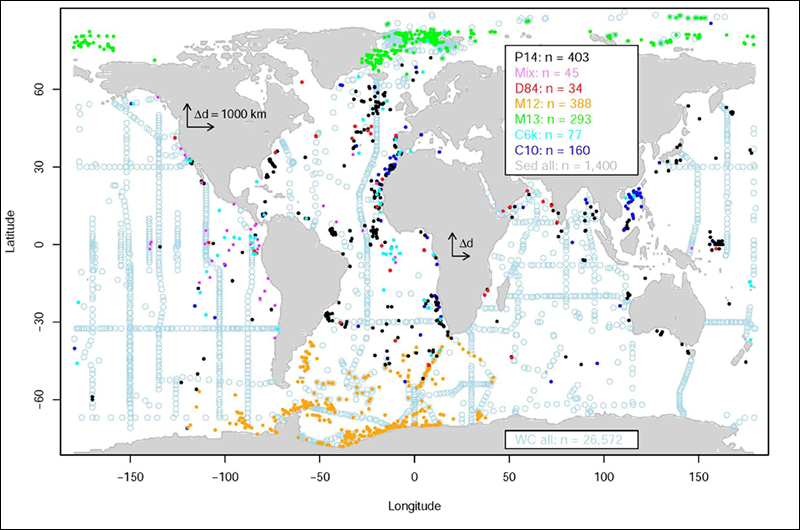Scientists still don’t fully understand the climatic transition that took place on Earth between the Last Glacial Maximum and recent times. Even though carbon cycling and the associated rise in atmospheric carbon dioxide (CO2) during this period are the world’s foremost research topic related to global warming studies, the phenomenon remains unexplained. Changes in ocean circulation during the last deglaciation have been linked to the increased rates of global CO2 released into the atmosphere, but the exact mechanism of this link is still unclear. Several challenges remain in quantifying changes in the ocean’s circulation and carbon storage.
Several challenges remain in quantifying changes in the ocean’s circulation and carbon storage.
The Past Global Changes (PAGES) Ocean Circulation and Carbon Cycling (OC3) Working Group, some 14 oceanographers and paleoceanographers working in different aspects of ocean studies, assembled and discussed their contributions at a workshop last summer, and they planned the focus of future studies in ocean circulation. One aim of the workshop was to contribute new regional syntheses of carbon isotope data throughout the last deglaciation and to make comparisons of these syntheses to other paleoclimatic proxy reconstructions and isotope-enabled model simulations.
The objectives of the workshop also included bringing together seagoing paleoceanographers, modelers, and database managers to discuss OC3 database issues, including data formatting and links to other databases. They also discussed methods and uncertainties of constructing age models and how the OC3 database can be used to constrain models of ocean circulation change and to create regional syntheses of benthic carbon isotope measurements.
The 3-day workshop consisted of five main sessions covering the OC3 Working Group themes of modeling, chronology, the Atlantic Ocean, the Pacific Ocean, and the atmosphere. The modeling session started with discussing the preliminary results of modeling the change in ocean circulation and carbon cycling, followed by a discussion of the Eurasian deglaciation, which caused a large number of icebergs to detach from North Atlantic glaciers about 15,000 to 18,000 years ago, an event known as Heinrich stadial 1.
The chronology session included presentations followed by discussions on comparing age models generated from radiocarbon with those generated from benthic oxygen isotope alignment and on the criteria for selecting the best possible age model. The Atlantic and Pacific sessions were based on the available data sets from the Atlantic and Pacific oceans and the difference between the South Atlantic and South Pacific based on the deep gateway hypothesis.

The atmospheric session included discussions on the evolution of CO2 during the last deglaciation and methane triple-isotope mass balance studies from ice cores. The discussion sessions were followed by an introduction to the LinkedEarth wiki paleoclimatic database system.
The LinkedEarth wiki can serve as a long-term platform to crowdsource the curation of the database past the end of the project.
The workshop concluded with a meeting in which the participants came to several agreements. These included an agreement to upload the down-core OC3 database (a collection of data from the lower portions of ocean sedimentary cores) onto LinkedEarth. The LinkedEarth wiki can serve as a long-term platform to crowdsource the curation of the database past the end of the project. Participants also agreed to establish a policy that for persons to be listed as coauthors on publications on the outcomes of the OC3 project, they must have contributed data. Data contributed by the OC3 group members will be synthesized in preparation for writing manuscripts on this project. Leaders of the Pacific, Atlantic, and Indian ocean segments of the OC3 project were assigned responsibility for data synthesis and manuscript writing.
Researchers specifically working on Indian Ocean data are encouraged to join the PAGES OC3 Working Group and may contribute to the database.
—Syed Azharuddin (email: [email protected]), Birbal Sahni Institute of Palaeosciences, Lucknow, India
Citation:
Azharuddin, S. (2017), Ocean circulation, carbon cycling during the last deglaciation, Eos, 98, https://doi.org/10.1029/2017EO087785. Published on 01 December 2017.
Text © 2017. The authors. CC BY 3.0
Except where otherwise noted, images are subject to copyright. Any reuse without express permission from the copyright owner is prohibited.

